Baroqueing News: the return of the thin white architettrice!
Plautilla Bricci works on show at Casa dell’Architettura in Rome
Guess who’s back in town? Our girl Plautilla Bricci!
Yuri Primarosa, who already curated the 2021/2022 exhibition at Galleria Corsini, is once again the curator of “Plautilla Bricci, architettrice a Roma nel Seicento” at the Casa dell’Architettura / Acquario Romano here in Rome all February (until 4th March, to be precise — and it’s free entry!).
“Who the heck is Plautilla Bricci?!?”, I’m hearing you ask, though… This is where my old Barocco e i suoi fratelli archive comes in handy, because I already wrote about her a couple of years ago, so I’m aptly recycling my own write-up here, now…
Most of the best known artists and architects from the baroque era were indeed “bros”, i.e. men, as the 17th century wasn't exactly an easy time to be a woman (nor is the 21st century, and although things have surely improved from back then, what’s happening these days in the US doesn’t bode well for women, nor for BIPOC people, nor for immigrants, for LGBTQ+ people, for people with disabilities…). Even less so in Rome, which at the time was the capital city of the Papal States — go ask Artemisia Gentileschi...
Introducing Plautilla Bricci:
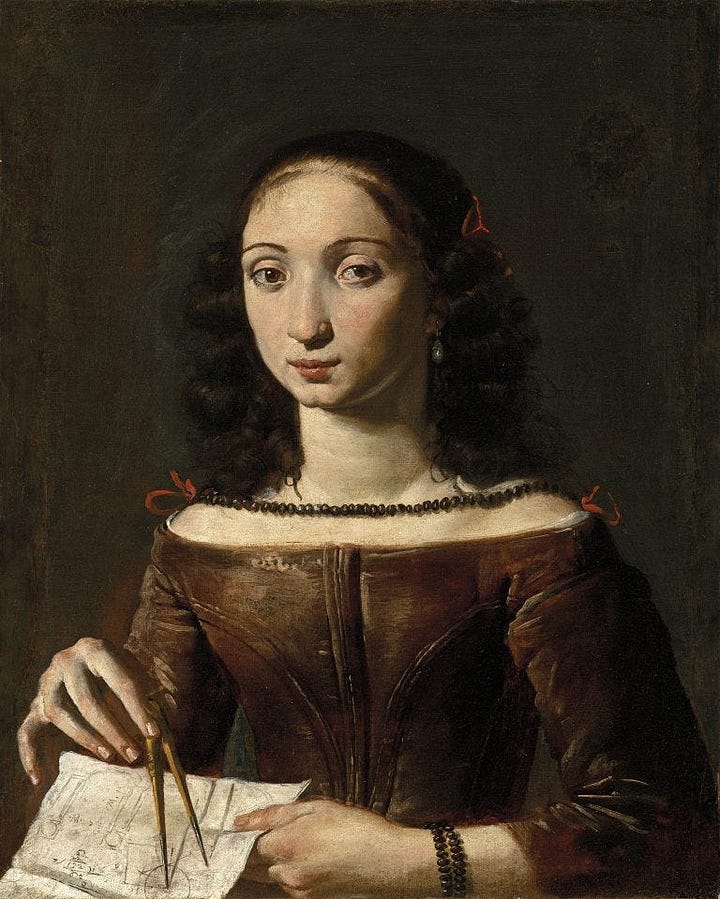
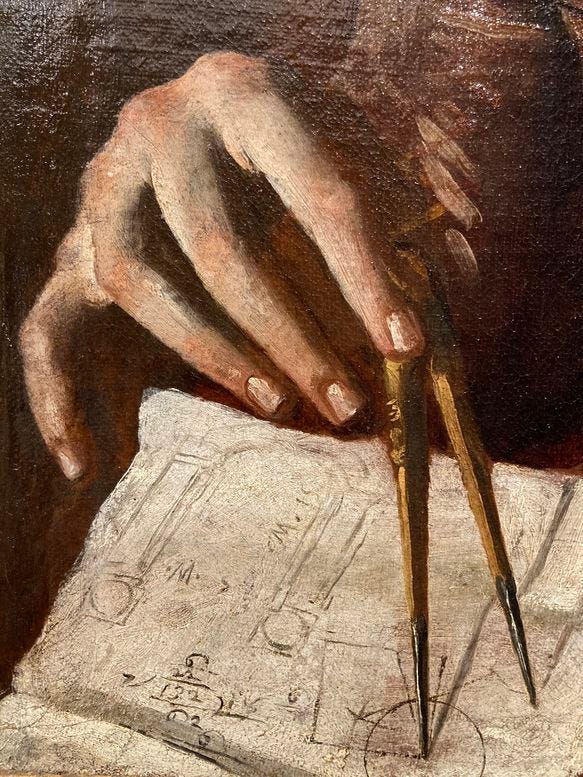
You know when you visit Rome and go to San Luigi dei Francesi, enter the church and bypass everything else just to stare at those marvellous Caravaggios in the Contarelli chapel (last one on the left), and then leave? Well, shame on you, because in doing so you’re missing the chapel of St Louis (second chapel on the left), which was designed and built by our girl Plautilla, who also painted the altarpiece dedicated to the French saint, between 1676 and 1680:
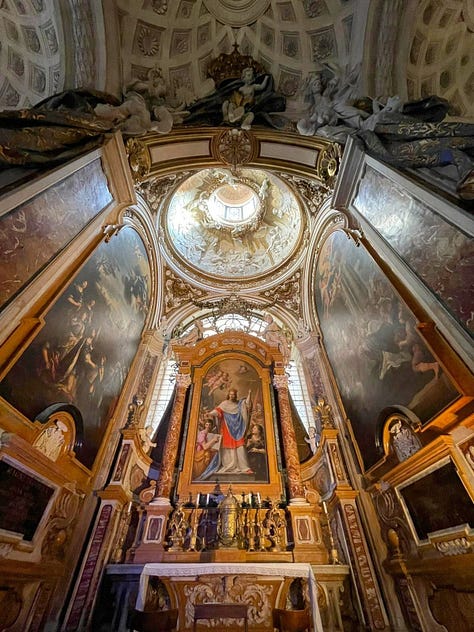
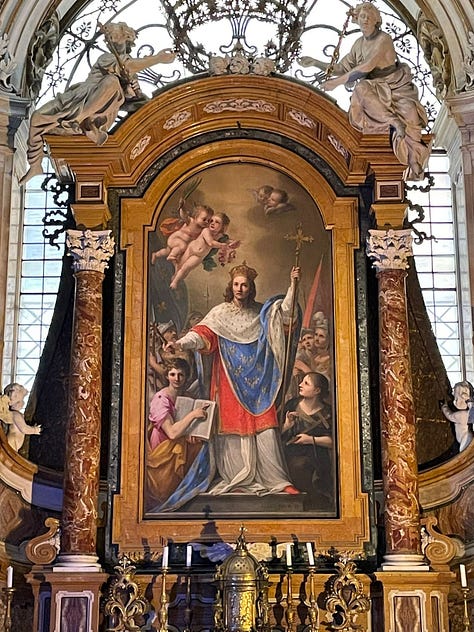
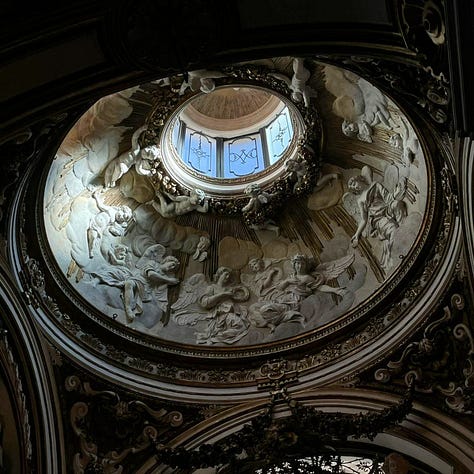
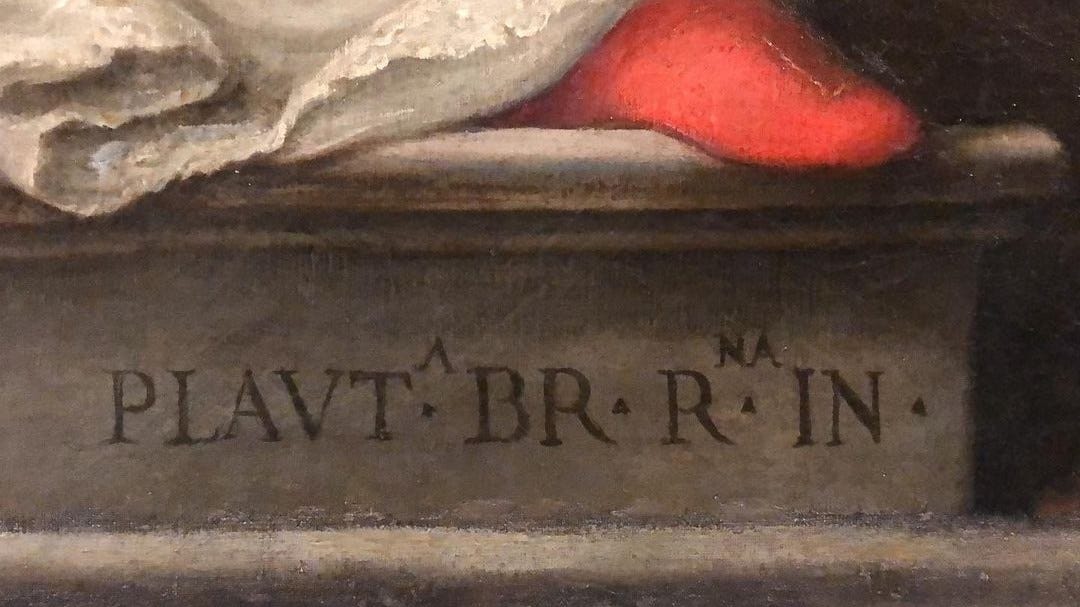
Born in Rome in 1616, to Giovanni Bricci and Chiara Recupito, Plautilla Bricci received her early artistic training by her own father, who was a versatile artist himself, and subsequently by attending the studio of Cavalier d’Arpino, the same in which young Caravaggio was trained, too.
Her aunt, Ippolita Recupito, was a famous Neapolitan opera singer, and her younger brother, Basilio, was an architect, too.
Her first known work is a painting depicting a Madonna with Child, made sometime in the 1630s, which became the main altarpiece of the church of Santa Maria in Montesanto (also known as “Chiesa degli Artisti”), in piazza del Popolo:
Fun fact (not): until a couple of years ago, only her brother Basilio had a street named after him here in Rome. In 2023, however, on International Women’s Day, this eventually changed, as the local administration named after Plautilla Bricci one of the avenues inside Villa Pamphili.
Of course, naysayers soon started sneering at that, because the term “architettrice” (woman architect, that is) isn’t in use in the Italian language, the correct term for a woman architect being “architetta” — but they don’t like that either. Nevertheless that’s exactly how Plautilla described herself, and she indeed was the first documented woman architect in history: in a 1663 document “la signora Plautilla Bricci, romana” is clearly identified as the “architettrice”, the architectural designer of a villa on top of the Janiculum hill.
She enrolled as a painter in the Accademia di San Luca, the first institution of its kind to welcome women, but it's debated where and how she received her architectural training, since the Accademia didn't offer such a path of studies to women...
As I said, it wasn't easy being an unmarried woman, working as a painter and above all as an architect, in 17th century Rome — and in fact some of her architectural works at the time were either credited to her brother, Basilio, or to Elpidio Benedetti, who was Cardinal Mazarin’s right-hand man in Rome (in fact he was also responsible for Bernini’s famous trip to Paris…).
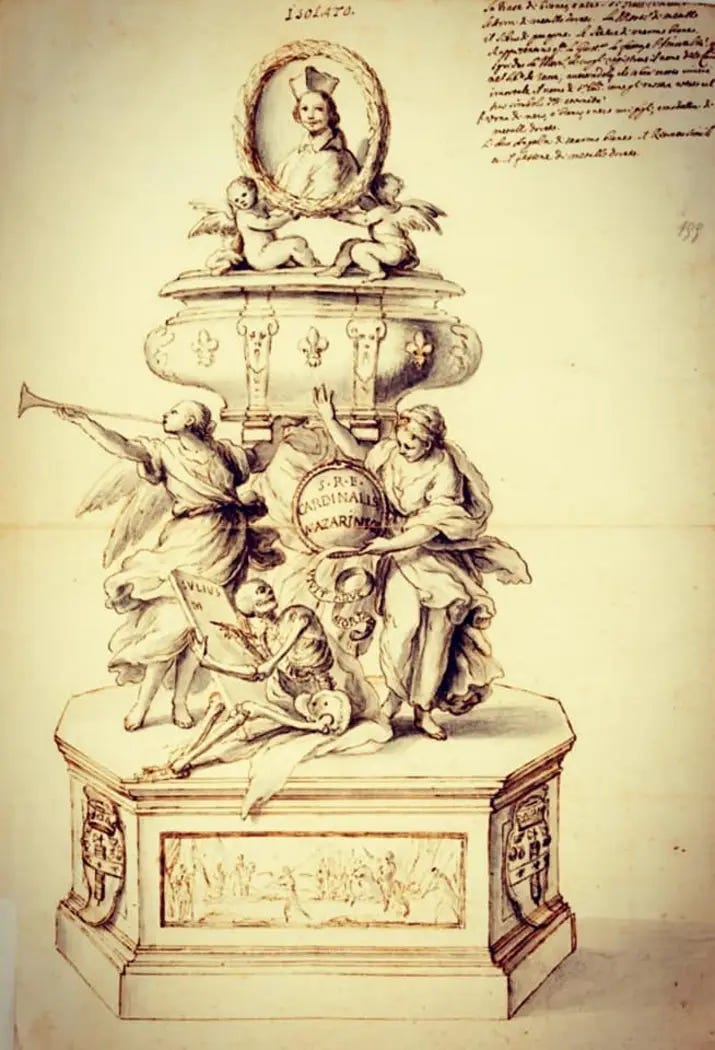

Surely enough, she knew how to network, as she became friends with the powerful Elpidio Benedetti, who helped her getting recognition as an architect by commissioning her the design of a villa for himself just outside the walls of Rome, that villa of that famous 1663 document earning her the title of “architettrice”: Villa Benedetta, also known as Il Vascello, for its resemblance to a vessel over cliffs.
Alas, the villa was almost completely destroyed in 1849, during the French siege of Rome, and only the “cliffs” remain visible today, but we still have Plautilla’s drawings for it, which, along with her other drawings and designs, you’ll be able to view at Acquario Romano until 4th March 2025:
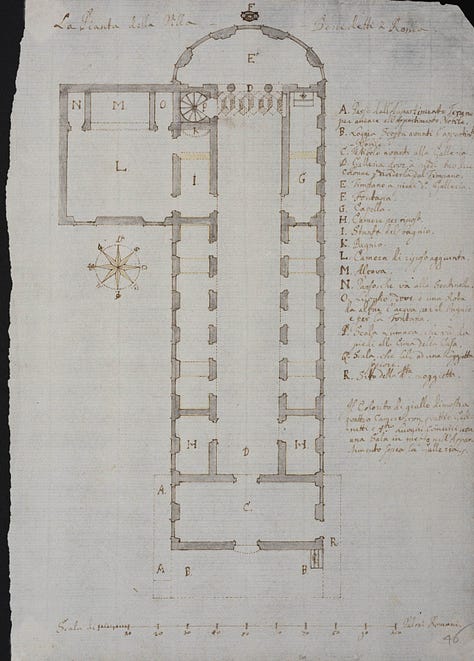
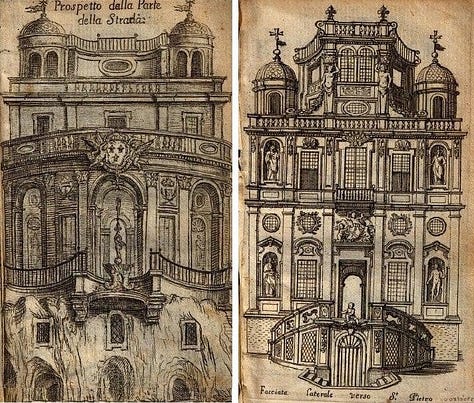
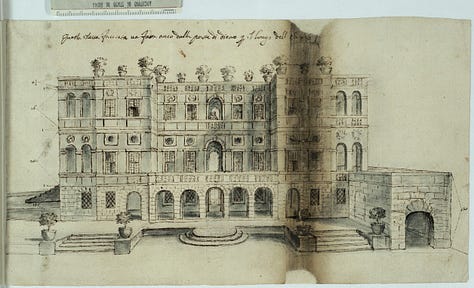
Among her last documented works there’s a large processional standard for the Oratory of St. John the Baptist in Poggio Mirteto (a small town north of Rome, and sort of an enclave for the Benedetti family), in 1675, depicting the birth of the Baptist on one side, and his beheading on the other:


Plautilla Bricci died in 1692 (other sources say in 1705), but her legacy isn't just the few works passed down to us. By quietly yet steadily navigating her life in the 1600s, Plautilla Bricci made it clear that women can and will achieve professional recognition in fields that orange clowns society would normally impede access to and progress in for them.







